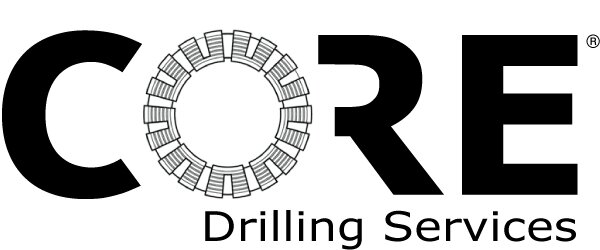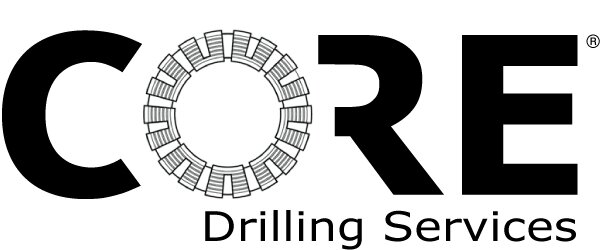Title Page
-
Site conducted
-
Performance Objective:
To prepare drillers for eligibility to become fully conversant with operating the Drill Rig as specified below.
Training Outcome:
At the end of this competency, each operator will be able to demonstrate competence in the operation of the designated drill rig. -
MAKE & MODEL OF DRILL RIG
-
Name of Operator
-
Name of Assessor
-
Name of Subject Matter Expert (SME)
-
Date/Time
-
The Subject Matter Expert is to be a Driller or Supervisor who has been signed off as being competent to operate the machine being utilised. The Assessor is someone holding current Cert IV Training Assessing Qualifications
The Operator, as part of the competency process, is to receive one four hour supervised training session on this machine, followed by a further two one hour sessions on another day (within one work cycle) where the start-up procedure and shut down procedure is to be checked and verified as correct.
Both parties are to complete the sign off sheet at the end of this competency.
SITE SUPERVISOR APPROVAL TO OPERATE
-
Site Supervisor
-
RIG SPECIFICATIONS
-
Location
-
Depth Capabilities
MACHINE FAMILIARISATION AND CHECKS
Emergency Equipment
-
Location of emergency stops
-
Location of fire extinguishers & fire suppression
-
Location and use of radio & sat phone
-
Location of fall arrest harness
-
Location of first aid & trauma kit
-
Location of spill kit
Daily Pre-starts (to be completed each shift prior to start-up of machine)
-
Rig Pre-Start Inspection
-
Check for out of service and danger tags
-
Check all guards & safety signage are in place & serviceable (including hydraulic gate shut off)
-
Check engine oil levels on dipstick
-
Check condition of water hoses
-
Check condition of main winch and wireline – including splice & clevis pin)
-
Check condition of hydraulic hoses
-
Check Bean pump oil
-
Check air filters
-
Check batteries and connections are in good condition
-
Mast lights operational
-
Check head oil
-
All gauges are working
-
Check hydraulic oil level on sight glass with all cylinders retracted (release pressure from tank before tilling)
-
Mast pivots and stay pins serviceable
-
Check fan belts for tension and condition
-
Check radiator coolant
-
Greases water swivel
-
Greases rod spinner
-
Greases top and bottom bearing seals on head
-
Greases winch and wireline drums
-
Greases make and breaks
-
Greases mast tilt rams
-
Greases mast pivots
-
Greases foot clamps
-
Check mast pivot for cracks and wear
-
Check fire extinguishers and fire suppression (2) for charge and currency
Start-Up Procedure
-
Ensure all personnel are clear of the rig
-
Ensure all levers are in the neutral position
-
The engine revs control should be in the idle position
-
Engage the over-ride and turn key to start
-
Press the over-ride and release once the engine has started & oil pressure/voltage gauges have settled
-
Ensure oil pressure is at the correct level
-
Remain on idle for around 5 minutes, until the engine warms up
Raising and Lowering Walkways
-
Make sure ladders are put down prior to moving walkways
-
Ensure operator is in line with each walkway whilst lowering into position
-
Once walkways are lowered control cable is placed back into position and hydraulic motor is isolated
-
Ensure the mast is dumped up and the rig mast stay arms are retracted and located in cradles; walkways and ladders up, jack legs are up and winch lines are secure, breakout & rod spinner in and also rod manipulator is in and then lower mast.
-
The rig must be moved with the mast down
-
Driller to observe walkways retracting into pack-up position one walkway at a time whilst maintaining visual). Ladders to be raised.
-
Driller to raise all jack legs before tramming (complete a 360 walk around).
-
If moving over any reasonable distance, the machine should be trammed with an escort in front.
-
If moving over steep terrain, the rig must be trammed up backwards
-
Always check blind spots on the rig before turning to ensure no personnel or equipment are present
-
Ensure communications are available when moving
-
Ensure operator has clear view – if not, use spotters
Raising and Lowering the Jacks
-
Ensure the rig is stationary and fundamentally stable
-
Lower the right and left rear jacks
-
Lower the right and left front jacks
-
To raise the jacks, the reverse of the procedure is followed
Positioning Rod Sloop
-
Driller to make sure the Rod Sloop is in the correct position
-
Driller is to hook up hydraulic hoses to hydraulic tube rack on rod sloop (making sure rig is turned off and also connect the hydraulic agitator)
Raising the Mast
-
Level the rig on the jacks
-
Lower ladders BEFORE extending platform (Driller must step to each side and maintain visual contact with each platform whilst lowering into position).
-
Checks for personnel or overhead hazards
-
Ensures all hoses and winch lines are stowed and secure
-
Engages the mast raise lever to the up position, spotters in place
-
Stops mast to move stay legs into position
-
As the mast approaches the break over point, the mast control lever eased towards the neutral position to slow down the speed of the mast
-
Sets up mast alignment as per client requirements
-
Mast stays adjusted to correct position
-
Dumps mast into position and securing mast footpad onto ground
-
Locate stay leg pins and adjust to correct position
-
Removes winch and wireline cables
-
Slews rod manipulator away from mast
-
Raises top drive to remove rod spinner and breakout assy.
-
Slews rod spinner and breakouts away from mast
Lowering the Mast
-
Clear the mast and table of any gear including foot-clamps
-
Slews rod spinner and breakout assembly in
-
Chuck is positioned hard up towards the water swivel and top drive positioned above the rod spinner
-
Rod manipulator arm retracted fully and positioned above the top drive in the mast
-
Explains weight distribution when raising lowering and tramming
-
Locates winch and wireline into centre of mast and secures
-
Release the mast stays, locking pins
-
Place the mast control to the lower position, spotter in place
-
Lowers mast to correct position to release stay legs and reposition onto cradles
-
As the mast approaches the mast rest, throttle the mast control lever back to gently set the mast down on the mast rest.
Rotation Cage
-
Checks functions of proximity switch are operating correctly
Use of Hydraulic Breakouts
-
Demonstrate the use of the breakouts and discuss the functions
-
Isolate the breakouts after completion of task
Running Rods In
-
Checks hauling plug is secured correctly to next rod to go down hole from rod sloop
-
Using winch line lifts rod into centre of mast in coordination with rod manipulator, thru rod spinner to align with rod in table
-
Tightens rod to required torque, using rod spinner, lifts up rod and opens foot-clamps
-
Lowers rod to next tool joint, closes foot-clamps ensuring fully engaged and bottomed out, lowers winch line to release residual weight
-
Removes hauling plug and connects to next rod on rod sloop
Running Rods Out
-
Slews rod spinner into position
-
Using main winch raises hauling plug into position thru rod spinner connecting to drill rod in table
-
Uses rod spinner to tighten hauling plug
-
Uses main winch to lift rods slightly, opens foot-clamps and raises rod to the tool joint required.
-
Closes foot-clamps ensuring fully engaged and bottomed out, lowers winch line to release residual weight
-
Uses rod spinner to loosen rod from threads
-
Uses winch to remove rod from mast onto rod sloop in coordination with rod manipulator
-
Removes hauling plug and continues with process
Using Wireline
-
Lowers wire line into drill string with care, operating at a pace where wireline is freely unspooling from winch drum practicing safe practice
-
Raises wire line from drill string with care.
Using Water Pump
-
Demonstrates on off position of main control
-
Demonstrates flow regulator for high or low water returns
-
Demonstrates discharge valve for releasing water pressure in drill string
-
Explains functions of wash down hose and use.
Shut Down Procedure
-
Ensure all levers are in the neutral position
-
Switch the engine revs to the idle position
-
Idle the rig down for at least 5 minutes
-
Wash down rig
-
Shut down the rig by turning the ignition to the off position
-
Isolates rig battery
Other / Comments
-
undefined
DIAMOND DRILL RIG OPERATOR <br>VERIFICATION OF COMPETENCY CERTIFICATE
-
-
Operator’s Name
-
Rig
-
Site
-
Assessor
-
Date
-
I acknowledge I have been shown and understand the instruction given to me and have been trained in the safe operation and maintenance of this machine.
I am aware of the capabilities of this machine.
I have read and understood the related Standard Work Procedures and will adhere to their content in the safe operation of this drill rig. -
Operator's Name & Signature
ASSESSOR TO COMPLETE
-
I have assessed
-
Operator's Name
-
on
-
Rig
-
and am satisfied he is competent to operate the rig in a safe and efficient manner.
The pre-start and maintenance aspects have been shown as well as any abnormalities in the operation of this machine. -
ASSESSOR
-
SUBJECT MATTER EXPERT







